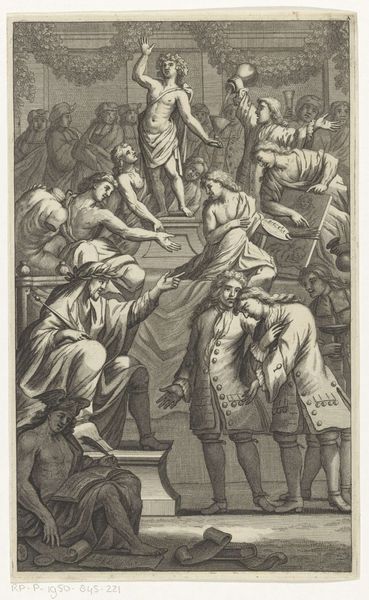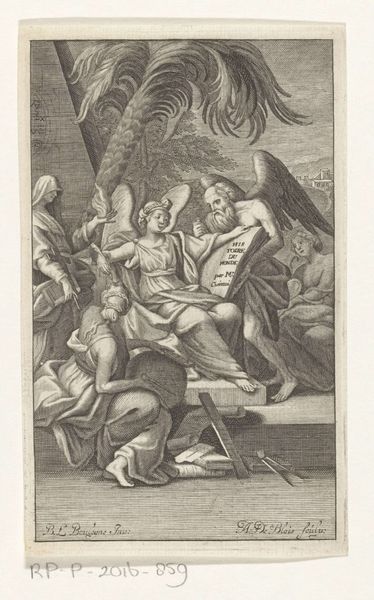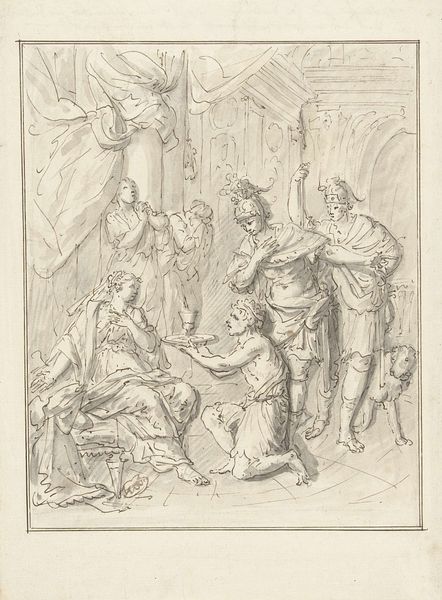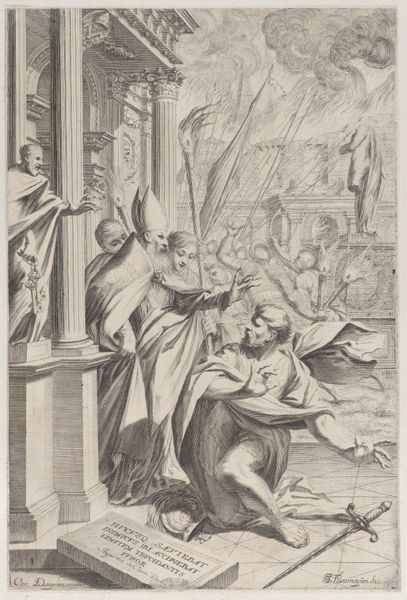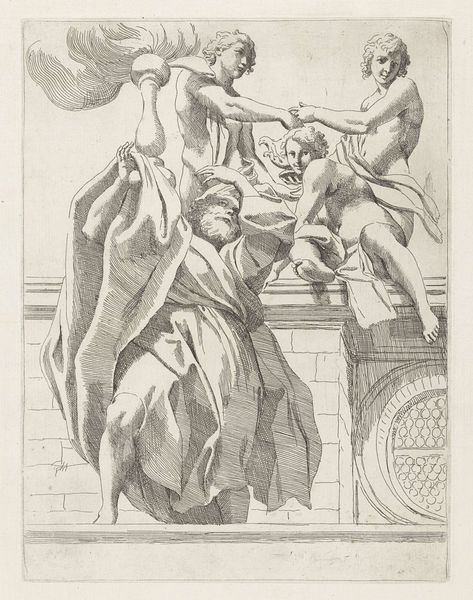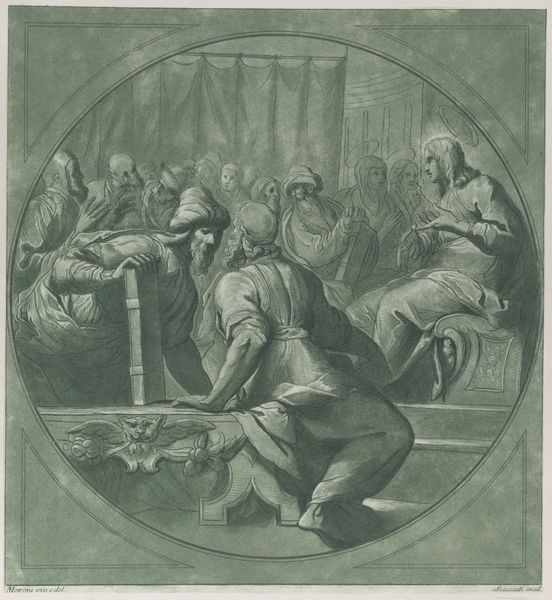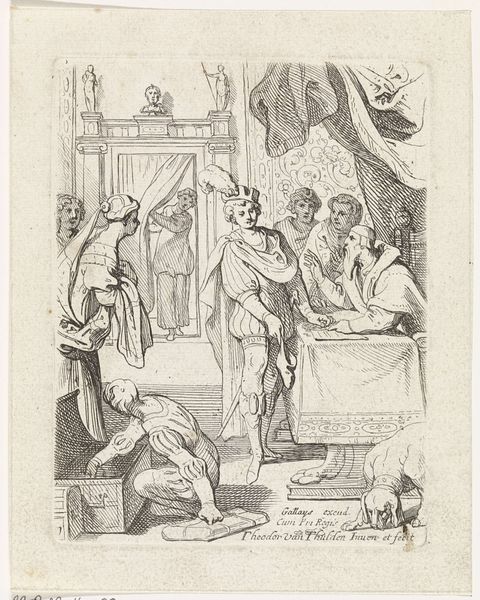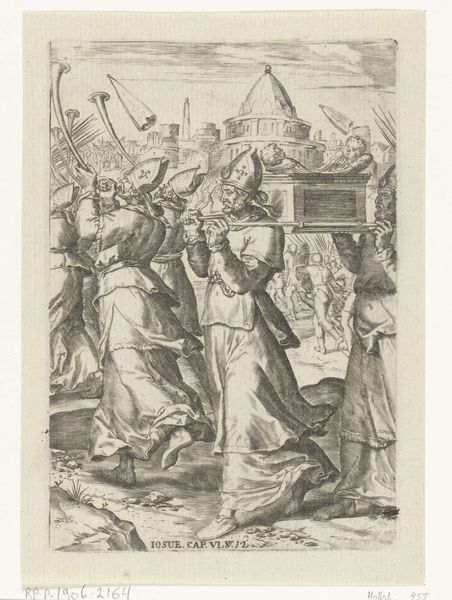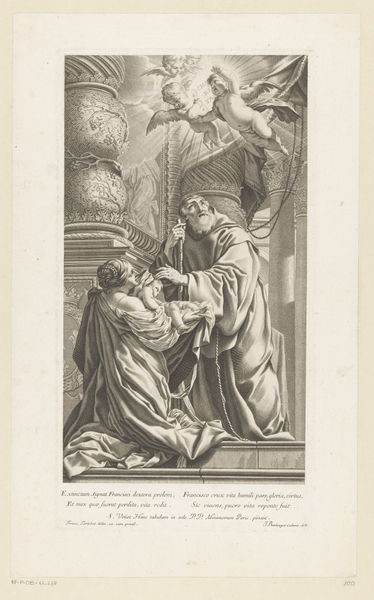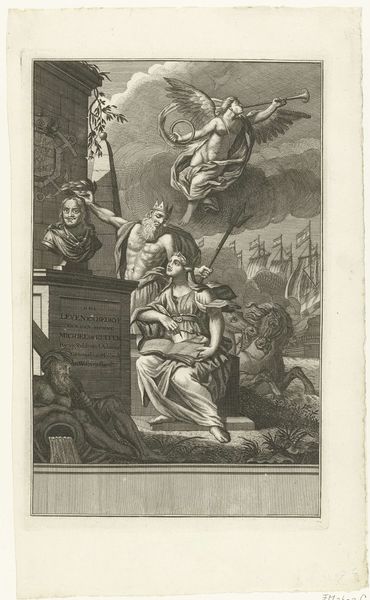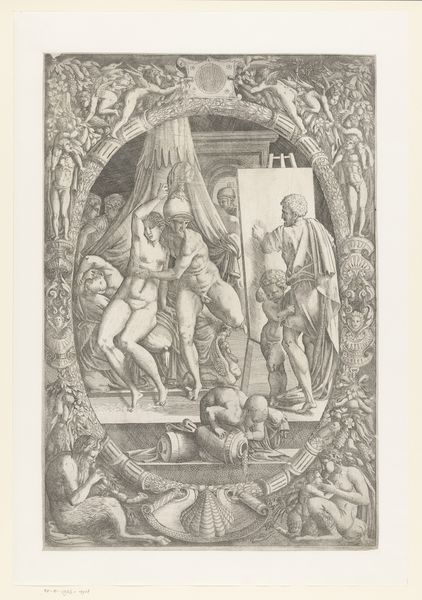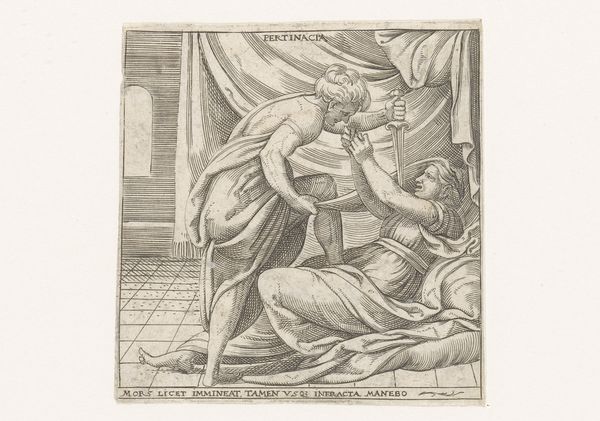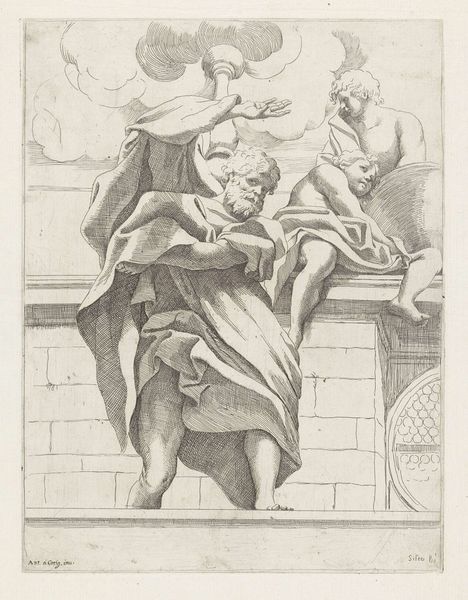
Reliëf met Amphion en Zethos in de Burgerzaal van het Stadhuis op de Dam 1663 - 1783
0:00
0:00
marble, engraving
#
baroque
#
pencil sketch
#
figuration
#
classicism
#
line
#
history-painting
#
marble
#
engraving
#
realism
Dimensions: height 292 mm, width 210 mm
Copyright: Rijks Museum: Open Domain
Curator: This is Hubert Quellinus’ engraving of a relief depicting Amphion and Zethos. It was created between 1663 and 1783. Editor: The immediate impression I get is one of contrasts—a juxtaposition of the artistic with the industrious, the refined alongside the chaotic. There is one brother seated, lyrically plucking strings, and another brother overlooking a crew erecting a building. Curator: Indeed. The engraving documents a relief that was part of the decorative program for the Town Hall in Amsterdam, now the Royal Palace. These brothers embody two paths. Zethos, we are told, favored strength and physicality, while Amphion chose music and poetry. Editor: You've described their mythological associations, and I'd argue those are deliberately evoked to convey an ideology—to present an allegorical representation of societal power through both intellect and labor. The building looms behind. What’s being erected? Is it simply a building, or is it a metaphor for the city, or the Republic, itself? Curator: It is meant to reflect on the city's identity and the qualities considered crucial to its success during the Dutch Golden Age. Strength combined with artistry building up Dutch culture! It reflects the value placed on the contributions of both intellect and manual skill. And both of the classical and republican qualities in its creation! Editor: And perhaps the illusion of accessibility. Observe how those actually involved in manual labour are relegated to the background, literally and figuratively dwarfed in comparison to these idealised heroic figures of the two founders and their arts. The labour required, or its contribution to the structure itself, feels muted here. It reinforces a specific narrative of how power is constructed and distributed. Curator: That’s insightful. From a purely art historical standpoint, the relief demonstrates a sophisticated understanding of classical ideals, as revived in the Baroque period, adapting these values to communicate specifically civic virtues. Its place within the Town Hall, later the Palace, is crucial to that reading. Editor: Thinking about the relief’s presence in a space that became a Palace raises questions about transitions from republic to monarchy. These layers, inscribed onto the walls themselves, reveal a complex narrative about Dutch self-representation. Curator: An engraving captures it but perhaps more crucially creates a record to disseminate beyond that singular civic building! Editor: Precisely. That act of recording makes all the difference when interpreting civic mythology and collective memory!
Comments
No comments
Be the first to comment and join the conversation on the ultimate creative platform.
